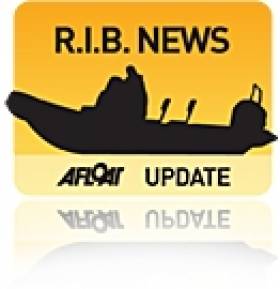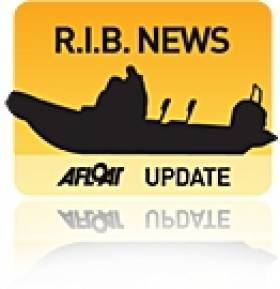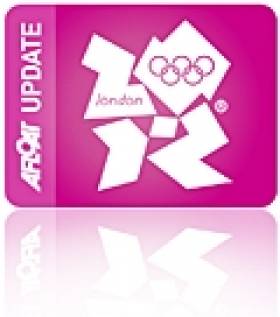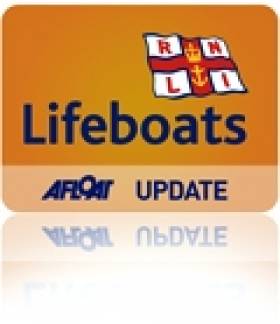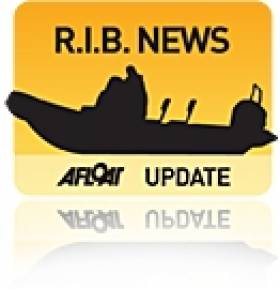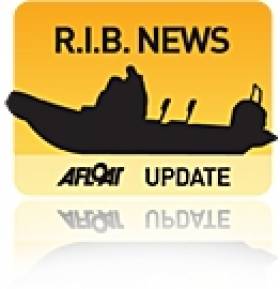Displaying items by tag: Rib
Avon Jet RIB Range on Show in London
#AVONRIBS – Worldwide specialist Jet RIB tender designer and manufacturer Avon is displaying its entire 2012 Seasport Jet Tender range at the Tullett Prebon London International Boat Show 2012 today.
The recently launched Seasport 380 Jet Tender will be accompanied by the recently upgraded Seasport 330 and 430 Jet Tenders.
All three tenders in the Seasport range are powered by a super-charged, 4-stroke HP jet engine, providing a safe yet exhilarating experience on the water. The entire range is now available in three tube colours including grey, navy blue and camel, and are equipped with high quality flush mount stainless steel fittings, maintaining the innovative and stylish design that has become synonymous with AVON tenders.
The new AVON Seasport 380 Jet Tender provides a large amount of internal space and includes seating for up to five adults and one child (under 37.5kgs). The tender offers upholstered seating for two passengers at the rear and up to three seats at the bow. Depending on the model size, the Seaport 330 and 430 also benefit from these seating upgrades.
Manufactured using high quality Hypalon™-Neoprene™ fabric, the tubes are now removable on the Seasport Jet 380 and 430 for easy maintenance. The Hypalon™- Neoprene™ tubing has been extensively tested to prove that it is seaworthy in all conditions, including exposure to UV rays in tropical conditions.
Upgrades to the Seasport Jet Tender range include upholstered seats as well as the option to include a luxurious teak deck, now also available in synthetic, and a telescopic bathing ladder. All three Jet Tenders have an adjustable steering wheel angle which enables easy storage inside the garage or on the stern platform or flybridge of the yacht. All of these features have been designed with ease of use and the comfort of the user in mind.
The latest AVON Seasport Jet Tender range is on display at the Tullett Prebon London Boat Show. For more information please visit stand H105
RIB Maker Continues to Expand
#ZODIACRIBS – Rigid Inflatable manufaturer Zodiac continues to evolve its range of RIBs, inflatable boats, tenders and liferafts with the some new concepts, new hulls and designs.
In addition to displaying three new models for the first time at today's Tullett Prebon London Boat Show, including the Cadet 310 Neo, Pro Classic 420 and the Yachtline Deluxe 420, Zodiac® has recently introduced a new, luxurious Medline range of boats as well as adding three new tenders to the Zoom range. To maintain their position as a worldwide leader in the manufacturing and distribution of Ribs, Zodiac® has also renewed its N-ZO, Pro, Pro Open and Cadet Ribs, ranges to give its customers more choice.
Trevor Newton-Walker, Customer Services Manager of Zodiac commented: "Our customers have a huge array of requirements when it comes to choosing the right boat, Rib or tender and Zodiac® is constantly striving to offer as many options as possible. This year alone we have added six new boats from 5m to 7.60m, eight new Cadet Rib models to many of our ranges and have re-designed seven boats so they can give the best performance possible when out on the water. Zodiac will continue to extend the possibilities for its customers in addition to leading the way in the design and manufacturing of RIBs".
The recent renewal of the Medline range with the Medline 500, 540 and 580 highlights Zodiac's® capabilities in creating a boat that makes sailing as stress free as possible both at sea and on land. Equipped with spacious sundecks and depending on the model size, a large aft bathing platform, this new range, complemented by new hulls, a new design and new tubes has been created to optimise time spent on-board.
Following the theme of luxury on-board, Italian designer Vittorio Garroni has once again used his exceptional talent to develop the new N-ZO 600, 680 and 760 with the needs of recreational boat owners in mind. Meeting necessary technical specifications and featuring exclusive lines, the N-ZO range is designed to offer passenger safety and comfort.
The ever popular Pro and Pro Open ranges have both been updated and re-designed to offer more options to customers and continue to be the perfect boats for water sports, fishing and relaxing. The models in the Pro range are now offered with a variety of tube designs and a choice between PVC or Hypalon™-Neoprene™ fabric in addition to a wide choice of colours. The re-designed Pro Open range incorporates bright and energetic accents of colour while the 550 is now equipped with a rear passenger seat which will safely and comfortably seat three passengers.
Purchasers of the Zodiac® Pro Classic 420, displayed at the Boat Show, alongside other models in the Sports Cruising Range have the option to customise the deck layout of the boat with various seat and console options to suit their individual requirements. Users are also offered a choice between a white or grey polyester hull and matching accessories. Available in red or black PVC or grey Hypalon™-Neoprene™, depending on the model, the Pro Classic was designed to offer unparalleled safety on board and includes a non-slip deck. The Pro Classic 420 offers a high load capacity, seating up to seven passengers.
Also on display at the London Boat Show is the Zodiac® Yachtline Deluxe 420, part of a sleek, attractive range of tenders, perfect for any yacht user. It now offers a choice on Hypalon™- Neoprene™ tube colours including white/blue, white/camel and white/grey. The tender has been designed with ultimate comfort in mind and can accommodate up to six people. The hull has been adapted to work in conjunction with heavy 4-stroke motors and bow rise is minimal making it incredibly easy to manoeuvre. In keeping with the beautiful design, all of the fittings on board, including the bow rail and mooring cleats are made from stainless steel.
Accommodating up to five people, the Zodiac® Cadet 310 Neo is equipped with a medium 'V' shaped fibreglass hull to provide excellent performance on the water. The large diameter buoyancy tube is available in Strongan™, an incredibly tough and durable fabric or Hypalon™- Neoprene™, which has a high shock absorbency and both provide advanced stability. Both materials are extensively tested to prove that it is seaworthy in all conditions, including exposure to UV rays in tropical conditions. The anti-skid fibreglass deck, combined with the bow storage locker makes it one of the most safe, comfortable tenders to sail, even in choppy waters.
Capitalising on its experience at sea, Zodiac® has expanded the Zoom range with three new dinghies including the Zoom 200 Roll Up, Zoom 260 Roll Up and Zoom 230 Aero. Known as a compact, robust range, the extension to the models already on offer presents customers with an affordable, safe option when sailing.
Zodiac® vessels are synonymous with style and safety. For more information please visit stand H105 at the Boat Show
Ainslie Goes Overboard in Perth
#PERTH2011 – British Olympic poster boy Ben Ainslie has been disqualified from both of today's Finn races in Perth, dashing any chance of a much sought after world title in the run up to the Olympics.
The three time Olympic Gold Medallist Ben Ainslie (GBR) boarded a media RIB covering the Perth 2011 ISAF Sailing World Championship and Ainslie is alleged to have 'grabbed' a cameraman.
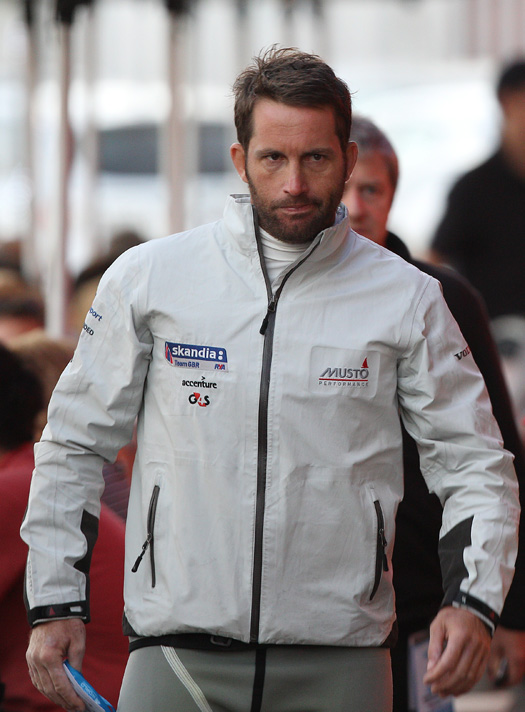
Ben Ainslie ashore in Perth - Photo: Ocean Images
An ISAF press statement just released says:
"Following today’s incident with Ben Ainslie (GBR), a hearing was heard by the International Jury under Racing Rules of Sailing 69.".
The International Jury’s decision is: GBR 3 is to be scored DGM for Races 9 and 10.
This means that Ainslie is disqualified from Races 9 and 10 and those scores cannot be excluded.
Britain's sailing superstar had just finished second to Dutch sailor PJ Postma in the first race of the day.
The Perth Now website says a 'confrontation' on board the media boat arose because Ainslie had been angered by the media boat creating a wash that aided a rivals.
He jumped from his craft, swam to the media vessel and climbed aboard.
After the incident Ainslie dived off the bow of the RIB and swam back to his abandoned dinghy.
Photographer Mick Anderson captured the incident.
The whole sequence of pictures can be seen here
Perth Now has more on the story here as has The Telegraph here
Comments from the British Camp:
- Stephen Park, RYA Olympic Manager:
Clearly this is a disappointing position for Ben and of course for the team. It's particularly disappointing bearing in mind that all parties that spoke at the hearing all effectively said exactly the same thing. Everyone accepted that there was fault on both the side of the television production crew and indeed on Ben's side. Unfortunately because of the situation we were in, with the sport trying to move to better television images to appeal to that market, sometimes there's a learning process to go through from a television perspective and sometimes there are implications and this is an example of one of those.
Both parties, the television side and Ben have both apologised to each other and as far they're concerned we're ready just to go back out and get on with our respective jobs tomorrow.
It's particularly disappointing that this Championship has effectively been determined in this way in the jury room rather than between sailors on the water.
There have been various rumours in the media about Ben having 'assaulted' the driver of the boat. As far as we're concerned there wasn't an assault which took place, and as far as the driver was concerned that was part of his statement to the jury so we're pretty keen to put that to bed and recognised that that's a bit of over exaggeration and sensationalism.
While we accept the penalty from the jury and do not condone Ben's behaviour, i would hope, on the basis of the jury's facts found, that it is recognised that lessons need to be learned both from the side of the International Sailing Federation as organising authority as well as the sailors. At the moment the sport seems to be fumbling its way into trying to make the sport more appealing for television but surely there is a better way than trialling new race formats, rule regulations and specifically in this case media initiatives than trialling them at the World Championship which is arguably the most important event in the Olympic cycle outside of the Games themselves.
Ben Ainslie:
I overreacted to what I thought was a situation where I felt my performance was being severely hindered. I'm very thankful that everyone involved has taken it how it was - as something which was blown out of proportion in terms of what actually happened. We've all apologised to each other and are looking forward to moving on.
I'm obviously really disappointed with the decision. Unfortunately it's part and parcel of the sport trying to develop its area within TV and in a number of instances this week that line has been crossed and that's something which everyone has to accept is a development.
I'm very sorry that the jury decided to react the way they did over something which really wasn't as big as it was blown up to be. It's very disappointing that the Championship has been decided this way. I've worked extremely hard over the last six weeks and have been training incredibly hard to get to this position in a venue which has been difficult for me with my size against the bigger sailors. I feel like I've actually sailed one of the best regattas of my life so to be in this situation now is very disappointing but I certainly hope now that it's one of the British boats on top of the podium if it can't be me.
Portrush Lifeboats Rescue Four from Capsized RIB
Both Portrush Lifeboats were in action on Saturday afternoon (15th October) to rescue four people in an overturned boat at the Barmouth at Portstewart.
Both boats were launched at 15.50 hours on a wet dark afternoon after reports had been received of an overturned rib. When the Inshore boat arrived on scene there was a heavy 2 metre swell. Three people were on top of the rib and one in the water.
The volunteer ILB crew got the person in the water into the lifeboat by which time the All-weather lifeboat was on scene. All persons were then transferred to the ALB and taken to Portrush.
All were wearing wetsuits and did not require medical attention.
Robin Cardwell LOM stated
'This was a perfect example of team work between the two crews of the lifeboats from Portrush There was no hesitation in the volunteer crews responding to this shout. Each man knew what he had to do to bring the four people and their rib ashore'.
More from UK coastguard source here:
Belfast Coastguard received a '999' call from a member of the public at 3:48 pm informing them that they had witnessed a small boat capsize and there were people in the water. Coastguard Rescue Officers from Coleraine were sent to the scene. The Portrush inshore and all weather RNLI lifeboats were requested to launch and the Irish Coastguard rescue helicopter from Sligo was scrambled.
Steve Carson, Watch Manager, Belfast Coastguard, says:
"The inshore lifeboat was first on scene and discovered one person in the water and a further five people on the upturned hull of a Rigid Hull Inflatable Boat (RHIB). The conditions on scene were challenging with a large sea swell.
All six people have now been transferred to the all weather lifeboat and taken to Portrush Harbour and do not require further medical assistance.
The RHIB is being towed to harbour by the lifeboat.
We would like to remind the public that if they witness an incident along the shoreline or on the coast to ring '999' and ask for the Coastguard. Swift action from the member of the public this afternoon greatly assisted in the rescue of the six people in the water."
RIB Challenge Prize up for Grabs at National Yacht Club
Stunning New Look to McLaughlin's Red Bay 650 RIB
There's a new look to Red Bay Boats all new look 6. 5 metre RIB and by all accounts from this week's Southampton Boat Show the Irish built performance RIB is a real head turner. They could've easily be dubbed the Show boat, 'Silver shadow' or then again 'White Lady' with her stunning tubes, stianless steel work, seating and white hull.
The Stormforce 650 is one of the most innovative RIBs produced by Redbay so far. The design came from a need for a standardised RIB of around 6.5 metres that could be built quicker and lighter in the County Antrim factory.
The 650 has one of the best handling hulls in its class, and we've seen her easily out-perform larger rival RIBs in rough weather. Although the basic hull is that of the Stormforce 6.5, the 650 features a redesigned bow and sheer line.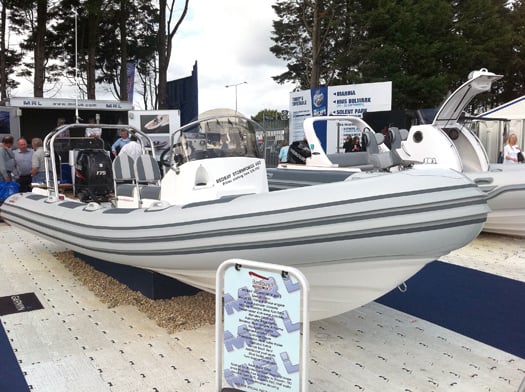
Master boat builder Tom McLaughlin was on the Southampton stand talking to Rib enthusiasts from across Ireland and the UK. The Red Bay name is now synonymous with heavy weather Ribbing and the boats have a reputation for their safety and comfort in big seas.
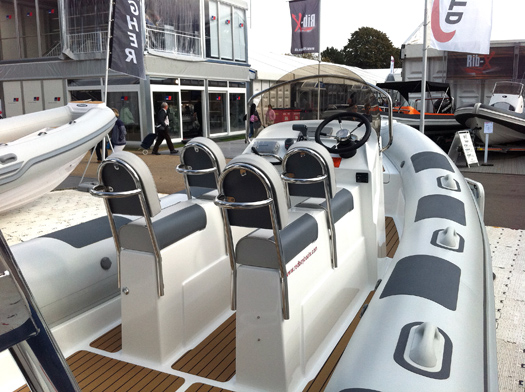
The 650 features a fully moulded internal deck. This gives a a fresh clean appearance. It also makes it easy to maintain. The 650 features a standard 4 seater side by side console and bow locker. The deck can be either finished in a quality non-slip coating or as in the case of the Show boat above with an in tek-deck.
It is fitted with a 175hp Suzuki 4-stroke outboard, 4-seater console, Garmin 750s touchscreen chartplotter, Garmin 100i DSC VHF, teak-decking, LED navigation lights.
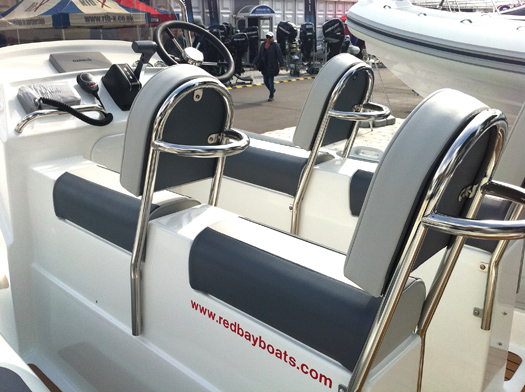
Red Bay RIBs Enjoy Trip to Ardbeg Distillery (Video)
Last year the fleet encountered stormy force eight conditions but this year the weather was kind and most of the Redbay fleet were soon tied up in calm conditions and the flotilla headed for the Old Kiln Cafe. Drams of Ardbeg waited on a table for everyone at the door. One boat didn't get there due to mechanical problems. It was towed into Rathlin Island and picked up on the way home.
A traditional music band played and after lunch the group was treated to a tour of the Distillery. A great day for this group of Northern Ribbers.
Up Close and Personal: New Boat Tours of Dublin Port
In addition to cruising this stretch of the River Liffey alongside the 'Docklands' quarter, the tour RIB boat will pass downriver through the East-Link toll bridge where visitors will get closer views of the variety of vessels and calling cruise liners from other ports throughout the world.
There will be five daily tours beginning at 10.00am, 12.00pm, 2.00pm, 4.00pm and 6.00pm.Tickets cost €15.00 for adults, €12.50 for students and the charge for senior citizens and children is €10.00.
In addition Sea Safari operate a 'River Liffey' only tour, a Dublin Bay 'North' and 'South' tours which visit Howth Head, Baily Lighthouse, Ireland's Eye and to Dalkey Island and Killiney Bay, where both bay tours provide a chance to spot local marine wildlife of seals, porpoises and sea birds.
- Rib
- Dublin Port
- Dublin Docklands
- Howth Head
- marine wildlife
- Cruise Liners
- Sea Safari Tours
- Dalkey Island
- Port of Dublin
- River Liffey
- Ports and Shipping News
- EastLink
- EastLink Toll Bridge
- Dublin Port news
- Baily Lighthouse
- Killiney Bay
- Seabirds
- Port of Dublin news
- RIBcraft
- M.V. Cill Airne
- Dublin Port cruise liners
- North Quay Wall Dublin
- Dublin Bay tours
- Ireland's Eye
The Avon SeaRider Becomes the Zodiac SeaRider
One of the best known RIB makes in the world, the Avon Searider, with hundreds in service with schools, clubs and commercial organisations around Ireland, and literally tens of thousands with similar organisations all over the world, has been treated to an upgrade and will now be sold as the Zodiac SeaRider.
Avon has been owned by Zodiac for many years now, but up until now, the two ranges were sold under separate brand names, and through separate distribution networks.
As part of a wider product integration programme, both ranges will now be sold exclusively through the Zodiac network, and under the Zodiac brand name.
This programme has already seen upgrades to the specification of the Zodiac Grand Raid range of inflatables, long established as the benchmark for commercial inflatable boats, as well as to the Avon W range of WorkBoats, now known as the Zodiac WB range of WorkBoats. These upgrades include even heavier Hypalon fabric, heavier duty standard equipment, new features fitted as standard, and a wider range of heavy duty consoles and seating.
The SeaRider range will continue to be built in the Avon factory in Llanelli, in Wales, as will the new WB series of WorkBoats, ERB Rescue Boats etc. They still offer the same outstanding performance, feature the same materials, and same "bulletproof" construction. The flooding bilge design provides ballast to make the SeaRider a stable platform while stationary at sea.

This feature is a hallmark of the SeaRider range, and is indespensible to divers, port authorities, military and race managers alike. The photo above shows a prototype SeaRider 5.4m in mid air, with old style Avon fendering. The first models in the New Zodiac SeaRider livery are due in Ireland within the next 14 days, and they look really well with the dark grey hull and deck, grey tubes and extra wide heavy duty black fendering.
Zodiac SeaRiders will also be available to special order in the old Avon colour scheme of Grey tubes with Orange Hull and deck - this will involve a slightly longer lead time, but gives fleet owners the possibility of adding new boats to their fleet in the same colour scheme as existing boats. The new Zodiac MilPro catalogue, incorporating models from both Zodiac and Avon ranges will be available shortly. However, we wanted to bring this news to you as soon as possible and we will contact you again with more information in the near future.
The sole importer for Zodiac in Ireland is Western Marine in Dalkey, Co. Dublin.
Police Seek Help from Northern Ireland's Coastal Communities
Project Kraken is a UK-wide campaign which aims to increase vigilance along the coastline and encourage the community to work together to help combat any criminal or terrorist activity.
Inspector David Connery explains: "We're encouraging those living by the coast and members of the maritime community to look out for any suspicious activity and report it to the police immediately so that we can take action if necessary.
"Beaches, marinas and harbours can be uncomplicated points of entry into Northern Ireland and police rely on members of the public to make us aware of anything untoward.
"Please contact police immediately if you find:
Unusual boat movements late at night or early in the morning.
People being landed at unusual locations.
People not knowing about boat handling.
People with inadequate dress for sailing.
Boats moving around at night time with no navigational lighting.
RIBS being loaded / unloaded at unusual times.
RIBS being loaded / unloaded at unusual places.
Packages being transferred out at sea from larger boats.
Packages being transferred to waiting cars.
Strangers acting suspiciously within the marina.
Strangers wanting to hire boats.
Boats with extra fuel tanks.
Boats with above average crew for the size of boat.
"If you notice anything suspicious or unusual please never involve yourself or touch any suspicious packages. Make a note of any registration numbers, markings or descriptions, and call your local police on 0845 600 8000. If the situation requires an emergency response, call 999.
"If someone would prefer to provide information without giving their details, they can contact the independent charity Crimestoppers and speak to them anonymously on 0800 555 111," Inspector Connery added.
Police are also encouraging local boat owners to register their vessels with the PSNI Ports Unit. This means that in the event of a theft, the rightful owners of the boat can be identified more quickly. Forms can be found on www.psni.police.uk or please contact the PSNI Ports Unit on 0845 600 8000.




























